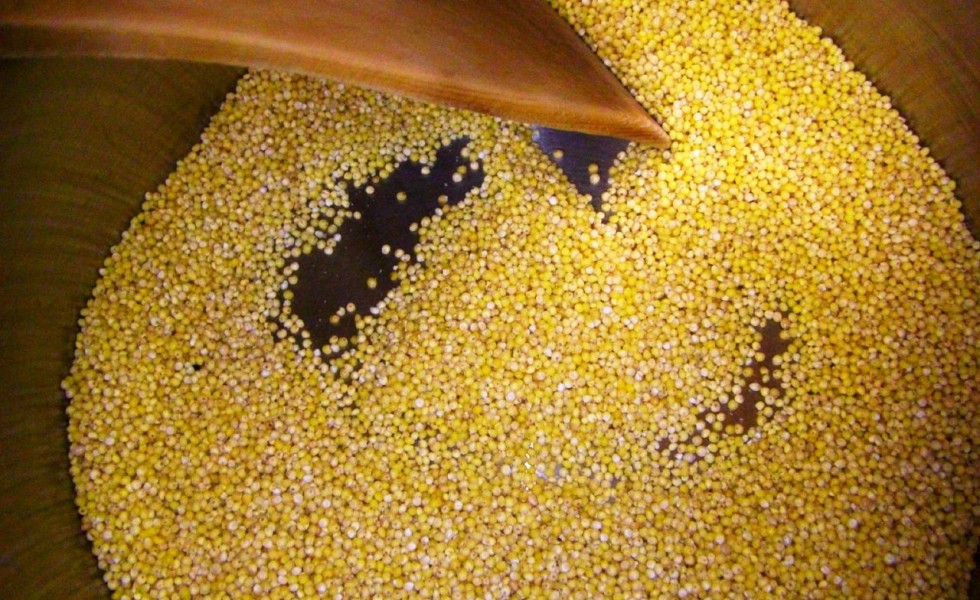Feeding the World: Part Two
Posted on June 17, 2014

It’s just a fact that some people see the proverbial glass half-full rather than half-empty and some people say tomahto, others tomato.
These tomahto/half-fullers aren’t knuckleheads. They simply view the world from a different angle and, often, that difference offers fresh insights and solutions others can’t see given their never changing, tomato view.
Tim Wise, director of the Research and Policy Program at Tufts University’s Global Development and Environment Institute, is one of those different-perspective people.
For example, if you ask Wise “How will we to feed the world in 2050?” his response will be “Who’s we?” and “Don’t you mean ‘How are we going to feed the world’s hungry?’”
He’s right. Feeding the world’s hungry is different than “feeding the world.” According to best estimates, about one in 11 people around the world, or 800 million of our planet’s 7 billion, are undernourished—“hungry”—today. That’s a lot, but it’s not 7 billion.
Moreover, as Wise and co-author Marie Brill, the executive director of ActionAid USA, lay out in an Oct. 2013 report on food, food production and hunger, much of the economic forecasting and many of the “public pronouncements” about future global food needs are “flawed” and “misleading.” (Link to the report at http://live-farm-and-food-file.pantheonsite.io/in-the-news/.)
The most misleading, according to Wise and Brill, is the oft-quoted 2008 prediction by the United Nation and the World Food Program that foresaw “a doubling of global food production by 2050 to meet rising demand from a growing population”—estimated to be 9 billion—“expected to consume more meat as well as from rapidly growing demand for bioenergy crops.”
In truth, note Wise and Brill, the UN’s “expert team of agricultural modelers hadn’t called for a doubling of food production by 2050. Rather the models… had indicated the need to increase overall agricultural production by 70 percent from 2005/07 to 2050.”
Later, in 2012, when the UN’s Food and Agricultural Organization plugged updated data into the model, “these estimates brought the figure down to 60 percent for the same period.”
That’s an astonishing difference and a difference never mentioned in farm and ranch country mostly because the newer forecast doesn’t jibe with our long-held, outdated beliefs.
In short, a doubling it was and a doubling it will remain no matter the facts.
Another astonishing difference in our current march “to feed the world,” point out Wise and Brill, is the vast difference between food production and agricultural production. There’s a lot of farm production included in agricultural production that has nothing to do with food, like biofuels.
Indeed, the current 60-per-cent increase in the world’s food need by 2050 includes “biofuel expansion to meet existing mandates through 2020,” write Wise and Brill. Many of those mandates, mostly in Europe and the U.S., however, are either on hold or facing revision, explains Wise in a May 6 telephone interview, “because the logic behind them has changed drastically in the last few years.”
Another often-overlooked area of coming food production is food already produced but wasted. By most estimates, “One-third of global food production fails to nourish anyone,” write Wise and Brill. In developed nations, we throw it away as waste; in developing nations, most of it spoils for lack of refrigeration or roads to get it to market.
“Addressing either side of that problem,” remarks Wise, “will address a lot of hunger in both worlds while further reducing the 60 percent increase in food production predicted by the FAO.”
The Wise-Brill report isn’t a rhetorical half-full/half-empty exercise.
Instead, they write, it shows that “hunger, now and in the future, is less a matter of inadequate production than inequitable access to food and food-producing resources, and a singular focus on increasing production is misguided…”
And that’s regardless how you slice the tomato/tomahto.
Share This